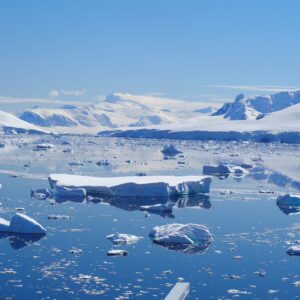More than a century ago, Einstein discovered a paradox in the expected behavior of mirrors moving at the speed of light. Perhaps this paradox has now been resolved.
In 1905, Albert Einstein discovered a paradox in a thought experiment about mirrors moving at the speed of light. Now, new calculations may have revealed this paradox.
“If you search the Internet for 'What do you see in a mirror moving at the speed of light?', you will find heated discussions in physics forums. Surprisingly, none of the suggested answers are correct,” says the physicist. Sergey Bulanov From the ELI Beamlines facility in the Czech Republic.
Read also
Researchers are still making all kinds of fascinating discoveries about ice
People used to see ice cream as something wonderful, but now you can take it out of the freezer even in the middle of summer. Max Leonard thinks we should freeze this…
According to Bulanov, it follows from Einstein's theory of special relativity that light reflected from a mirror moving at the speed of light has infinite intensity and amplitude (as seen from a person not moving with the mirror). But Einstein's equations also lead to a different result: any object moving at this high speed becomes transparent, and thus does not reflect any light at all.
Plasma mirrors
Bulanov and his colleague Timur Iserkipov The National Institutes of Quantum and Radiological Science and Technology in Japan now believe they have solved this paradox. Their statement will soon appear in a scientific journal Physical review e.
The problem, in their opinion, is that the mirror that Einstein envisioned cannot exist. An infinite amount of energy would be needed to move an ordinary glass mirror at the speed of light.
So the researchers studied a more feasible alternative: mirrors made of plasma, or a mixture of ions and electrons. Such mirrors have already been produced in experiments using incredibly powerful lasers. When these lasers target specific materials, they produce plasma with localized turbulence. These disturbances reflect light like a mirror and move very quickly through the plasma, almost at the same speed as light.
Three-dimensional
These real mirrors differ from Einstein's ideal mirrors in a crucial point: they are not two-dimensional, but three-dimensional. This means that behind the reflective surface of the mirror there is also a plasma.
Bulanov and Esserkepov discovered that the properties of a 3D plasma mirror as a whole can vary, as can the properties of the light falling on it. In some scenarios the light is reflected intensely. In other scenarios, light is transmitted. In still other scenarios, the light forms a wave whose crests and troughs do not move forward, but only rise and fall near the mirror.
Partition the empty space
physical Brendan Dromey From Queen's University Belfast in the UK, he says this new theory could soon be tested as more and more facilities use very powerful lasers. According to Dromey, if plasma mirrors could indeed be made to reflect very intense light, it could lead to new imaging techniques, comparable to more powerful X-rays. According to him, intense light can also increase our understanding of fundamental physics by dividing apparently empty space into the pairs of particles and antiparticles that actually make up this space.
Physicist warns that assumptions made by Bulanov and Isserkypov about the 3D shape of a plasma mirror may have oversimplified the mirror Stefan Hessler From the Polytechnic Institute of Paris. However, he finds the work valuable, since there have been few mathematically rigorous studies of the situation.
Bulanov and Iserkhipov are now preparing an experimental test of their ideas. This test will be performed in a laboratory equipped with powerful lasers in the Czech Republic.

“Coffee buff. Twitter fanatic. Tv practitioner. Social media advocate. Pop culture ninja.”












More Stories
Which can cause an increase in nitrogen.
The Central State Real Estate Agency has no additional space to accommodate Ukrainians.
The oystercatcher, the “unlucky national bird,” is increasingly breeding on rooftops.